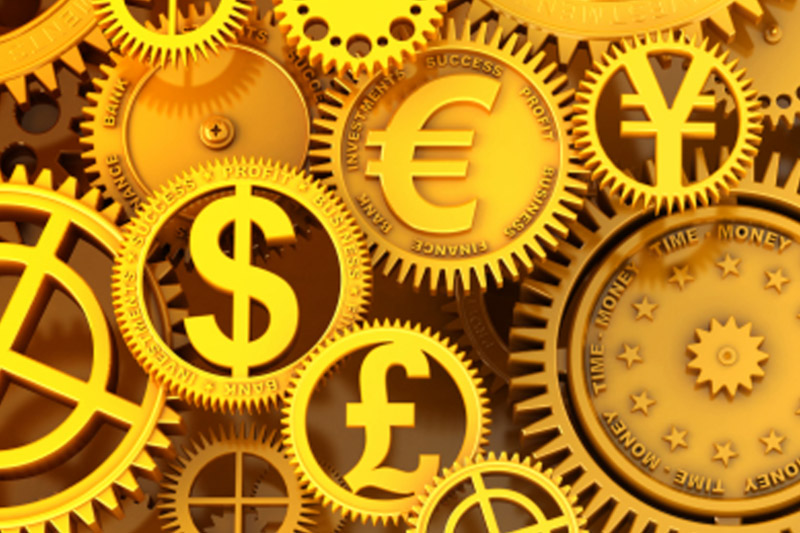Investing.com - The U.S. dollar was higher against all of its major counterparts on Tuesday, posting strong gains against the growth linked Australian and New Zealand dollars amid fresh concerns over a slowdown in economic growth in China.
During European morning trade, the dollar was up against the euro, with EUR/USD shedding 0.31% to hit 1.3198.
The dollar found support as fresh worries over a slowdown in the world’s second largest economy re-emerged earlier after global miner BHP Billiton said that Chinese demand for iron ore is slackening, sparking concerns that commodity prices may fall.
Sentiment on the single currency remained fragile as Italian Prime Minister Mario Monti prepared to meet with union leaders to discuss reforming the country’s labor market, as he attempts to reverse the fortunes of the euro zone’s third largest economy.
The greenback was higher against the pound, with GBP/USD shedding 0.21% to hit 1.5860.
Official data showed that the annual rate of consumer price inflation in the U.K. declined to the lowest since November 2010 in February, decelerating to 3.4% from 3.6% the previous month, broadly in line with market expectations.
The Bank of England has forecast that inflation will fall below its 2% target by the end of 2012.
The greenback re-approached an 11-month high against the yen, with USD/JPY advancing 0.55% to hit 83.79 and also pushed higher against the Swiss franc, with USD/CHF rising 0.32% to hit 0.9141.
In Switzerland, official data showed that industrial production jumped in the last three months of 2011, rising 7.9% and blowing past expectations for a 0.4% gain.
Elsewhere, the greenback posted solid gains against its Canadian, Australian and New Zealand cousins, with USD/CAD climbing 0.46% to hit 0.9914, AUD/USD slumping 1.09% to hit 1.0491 and NZD/USD tumbling 1.09% to hit 0.8179.
Earlier Tuesday, the minutes of the Reserve Bank of Australia’s March meeting showed that policymakers believe there is "ample scope" to cut interest rates in the event of a sharp slowdown in the economy arising from the debt crisis in the euro zone.
The dollar index, which tracks the performance of the greenback versus a basket of six other major currencies, rose 0.38% to hit 79.98.
Later in the day, the U.S. was to produce official data on building permits and housing starts. Meanwhile, Federal Reserve Chairman Ben Bernanke was to speak at an event in Washington; his comments would be closely watched.
During European morning trade, the dollar was up against the euro, with EUR/USD shedding 0.31% to hit 1.3198.
The dollar found support as fresh worries over a slowdown in the world’s second largest economy re-emerged earlier after global miner BHP Billiton said that Chinese demand for iron ore is slackening, sparking concerns that commodity prices may fall.
Sentiment on the single currency remained fragile as Italian Prime Minister Mario Monti prepared to meet with union leaders to discuss reforming the country’s labor market, as he attempts to reverse the fortunes of the euro zone’s third largest economy.
The greenback was higher against the pound, with GBP/USD shedding 0.21% to hit 1.5860.
Official data showed that the annual rate of consumer price inflation in the U.K. declined to the lowest since November 2010 in February, decelerating to 3.4% from 3.6% the previous month, broadly in line with market expectations.
The Bank of England has forecast that inflation will fall below its 2% target by the end of 2012.
The greenback re-approached an 11-month high against the yen, with USD/JPY advancing 0.55% to hit 83.79 and also pushed higher against the Swiss franc, with USD/CHF rising 0.32% to hit 0.9141.
In Switzerland, official data showed that industrial production jumped in the last three months of 2011, rising 7.9% and blowing past expectations for a 0.4% gain.
Elsewhere, the greenback posted solid gains against its Canadian, Australian and New Zealand cousins, with USD/CAD climbing 0.46% to hit 0.9914, AUD/USD slumping 1.09% to hit 1.0491 and NZD/USD tumbling 1.09% to hit 0.8179.
Earlier Tuesday, the minutes of the Reserve Bank of Australia’s March meeting showed that policymakers believe there is "ample scope" to cut interest rates in the event of a sharp slowdown in the economy arising from the debt crisis in the euro zone.
The dollar index, which tracks the performance of the greenback versus a basket of six other major currencies, rose 0.38% to hit 79.98.
Later in the day, the U.S. was to produce official data on building permits and housing starts. Meanwhile, Federal Reserve Chairman Ben Bernanke was to speak at an event in Washington; his comments would be closely watched.
